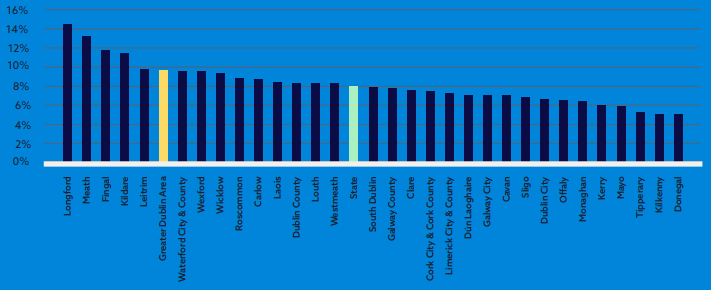- The population of the Greater Dublin Area is 2.1 million as of 2022 Census, accounting for approximately 40.5% of the total population of Ireland.
- While the population of Dublin County is estimated to be approximately 1.5 million as of 2022.
- The distribution of growth since the 2016 Census has greatly favoured the East, with population growth from the 2016 to the 2022 Census markedly higher than the national average in Fingal (~12%), Meath (13.2%), Kildare (11.4%), and Wicklow (9.4%).
- The Greater Dublin Area hosts urban centres with the lowest average age. Saggart (30.4) and Balbriggan (33.6) were among the lowest average age towns for their respective classifications as per Census 2022.
- Meanwhile, latest data shows that the local authorises with the lowest average ages are Fingal (34.3), Kildare (34.9), Meath (35.2), and South Dublin (35.5).
- Of the 32 Electoral Divisions that had over 10,000 people per km2 in 2022, 25 were in Dublin, five were in Cork, one in Waterford and one in Limerick.
- Meanwhile, the top five towns (1,500 people or over) in terms of population density are all located in County Dublin. They are Kinsealy-Drinan, Balbriggan, Rathcoole, Lusk, and Donabate respectively, ranging from 8,401 to 5,177 persons per sq km.

|